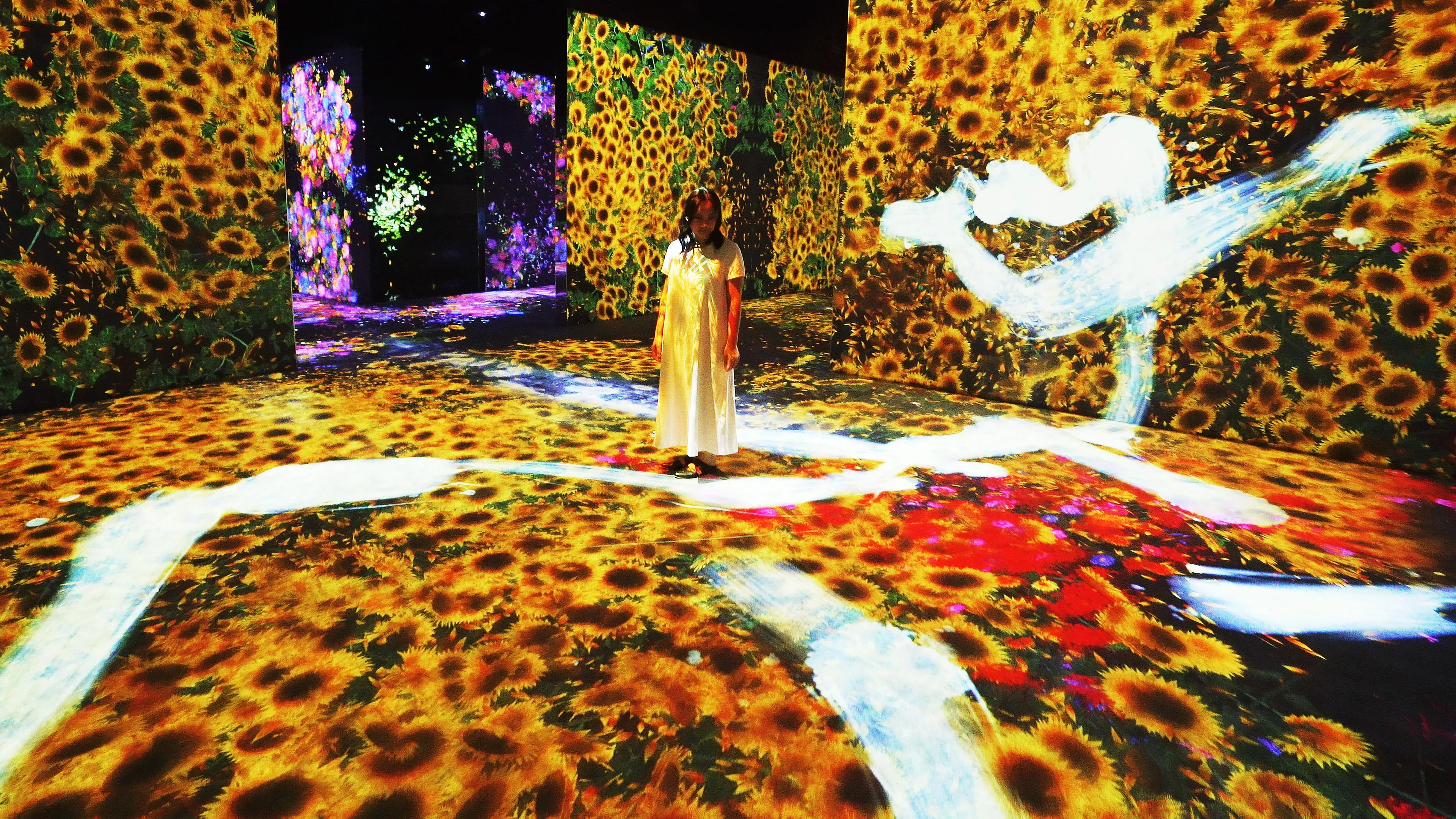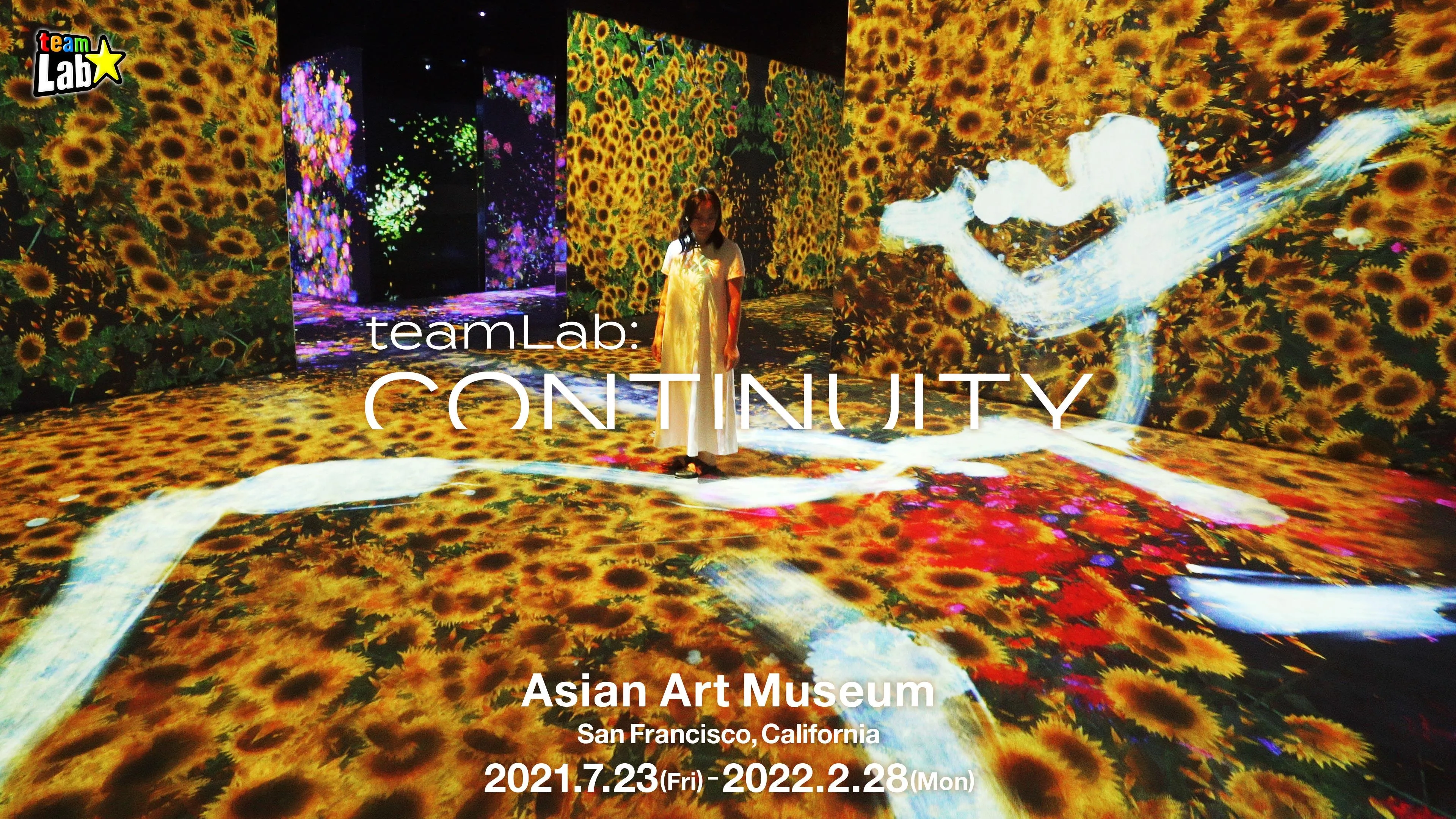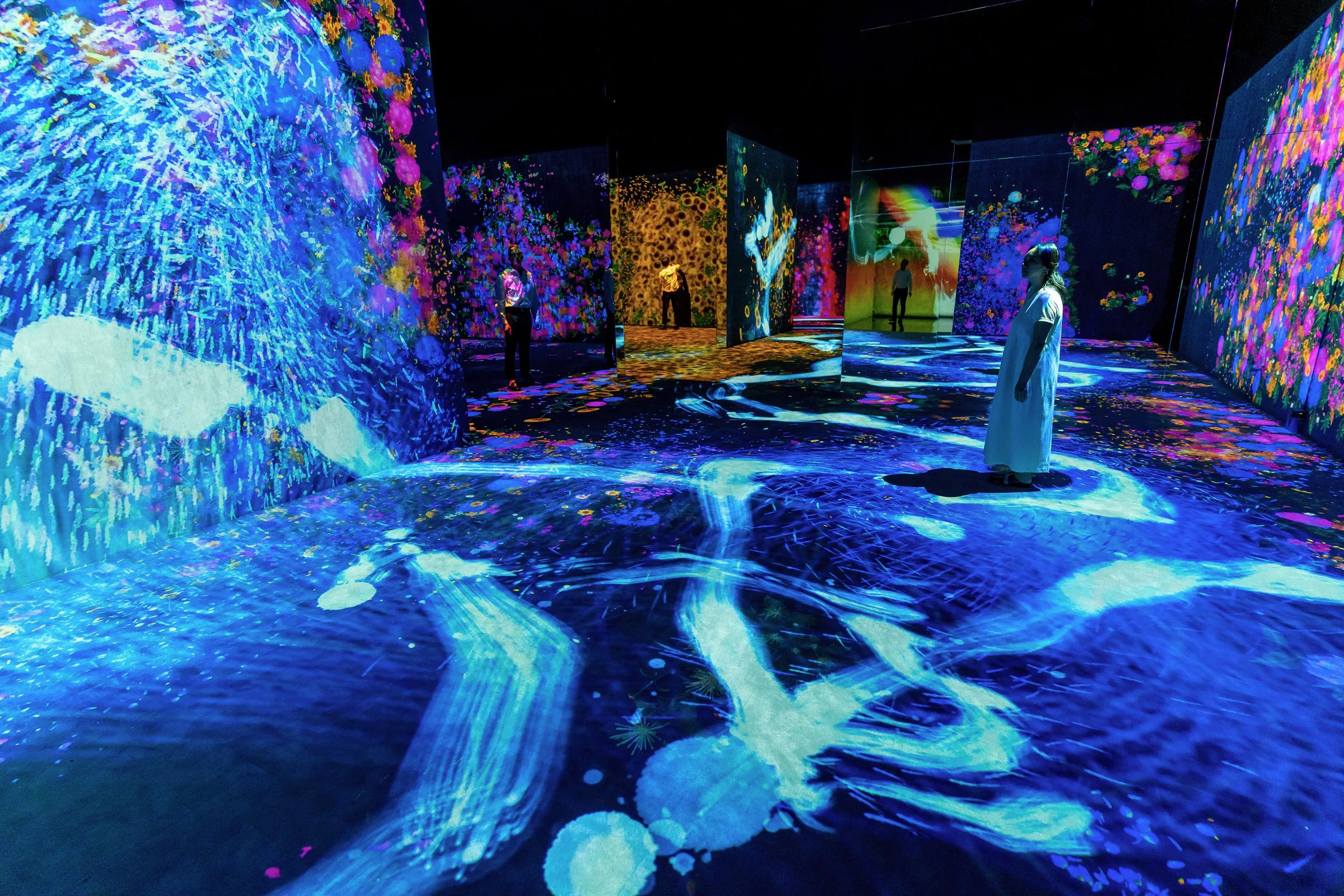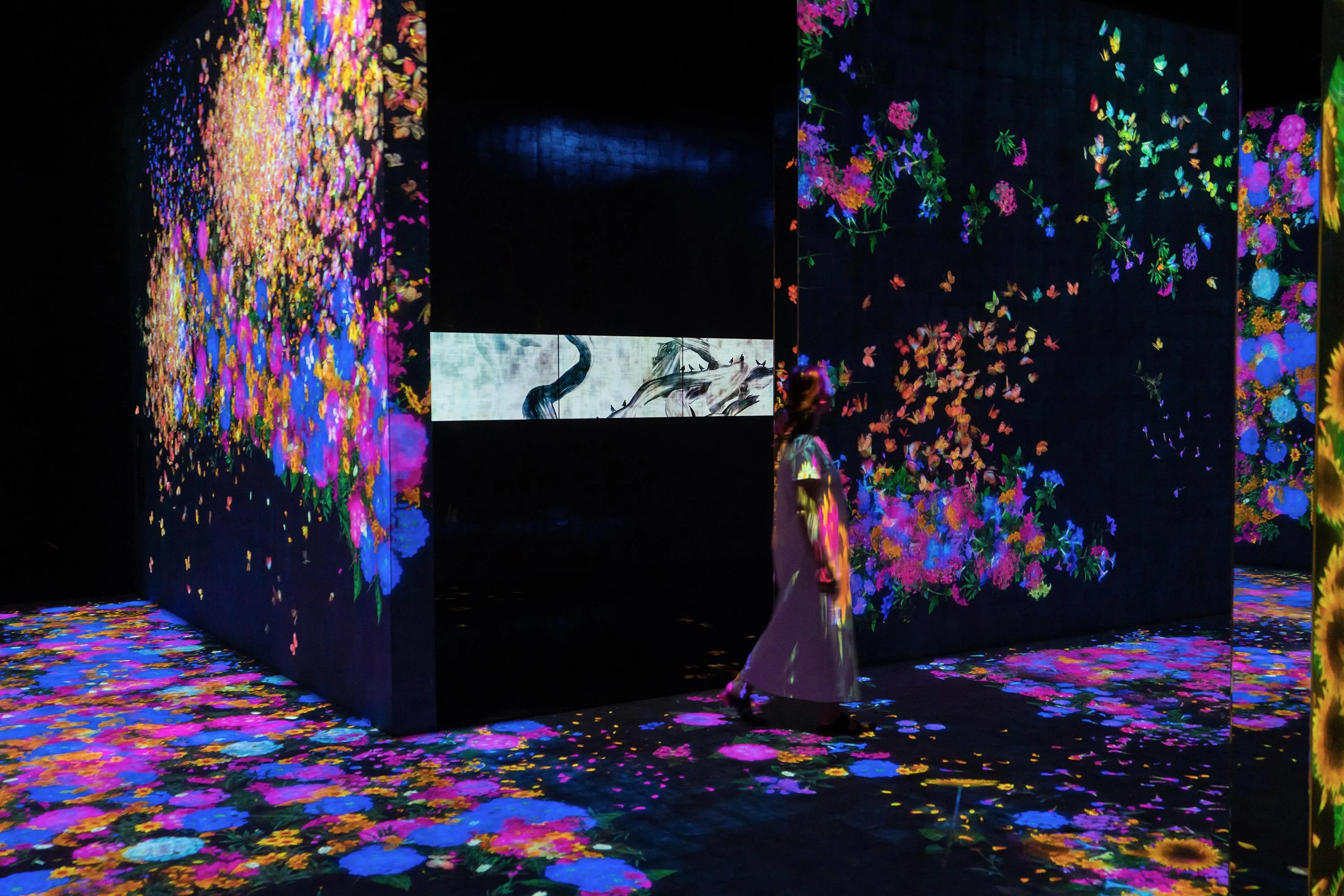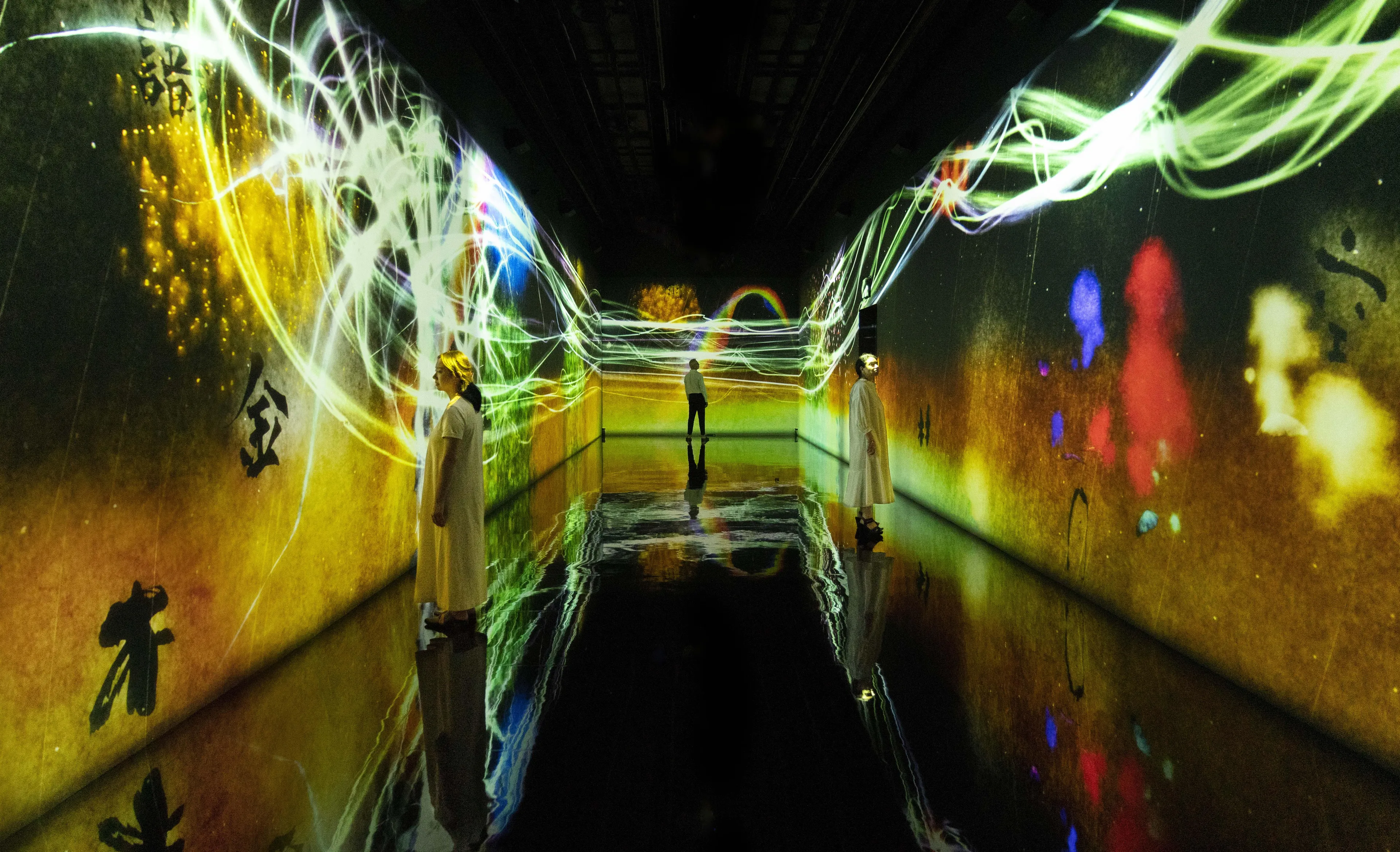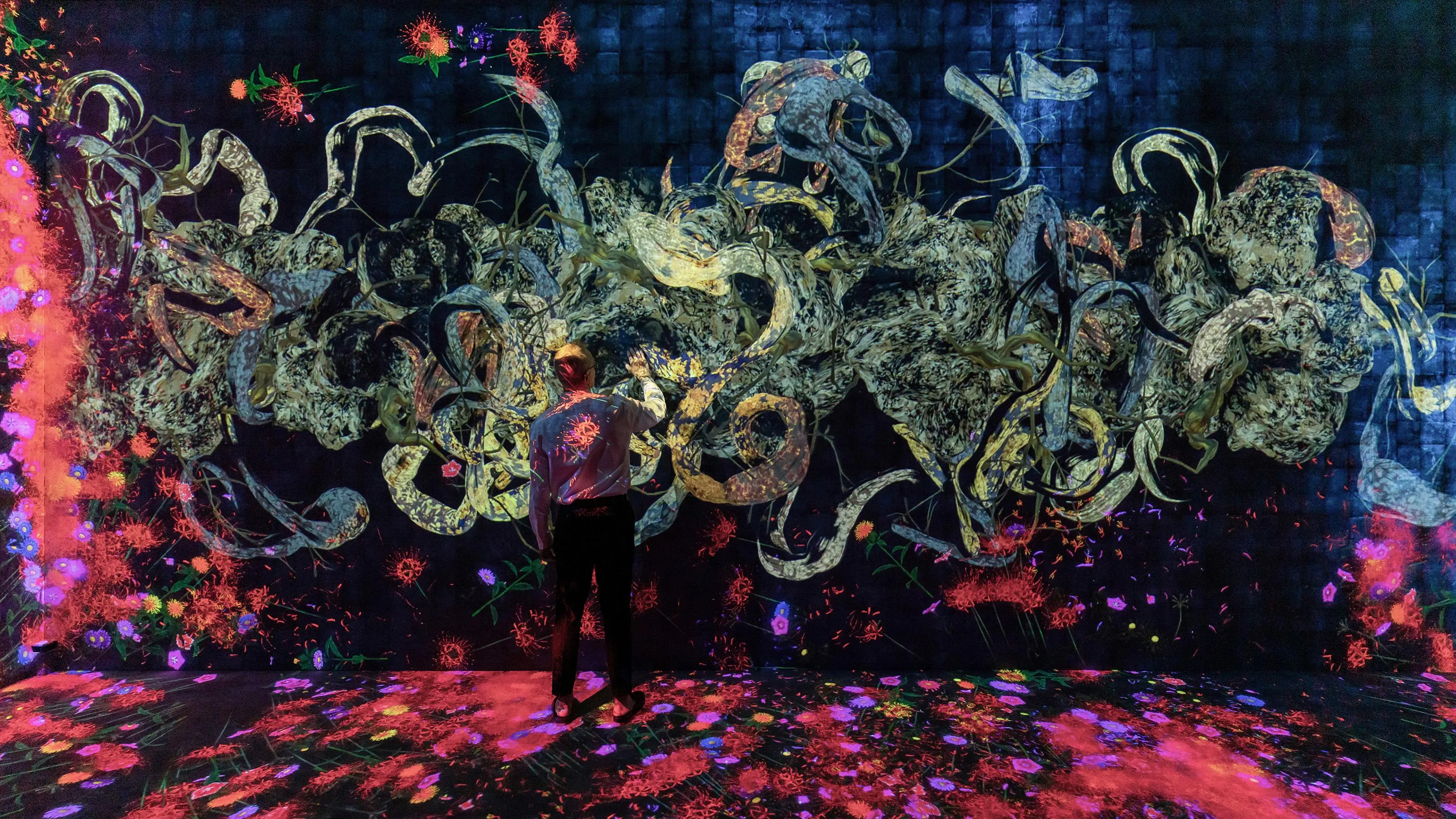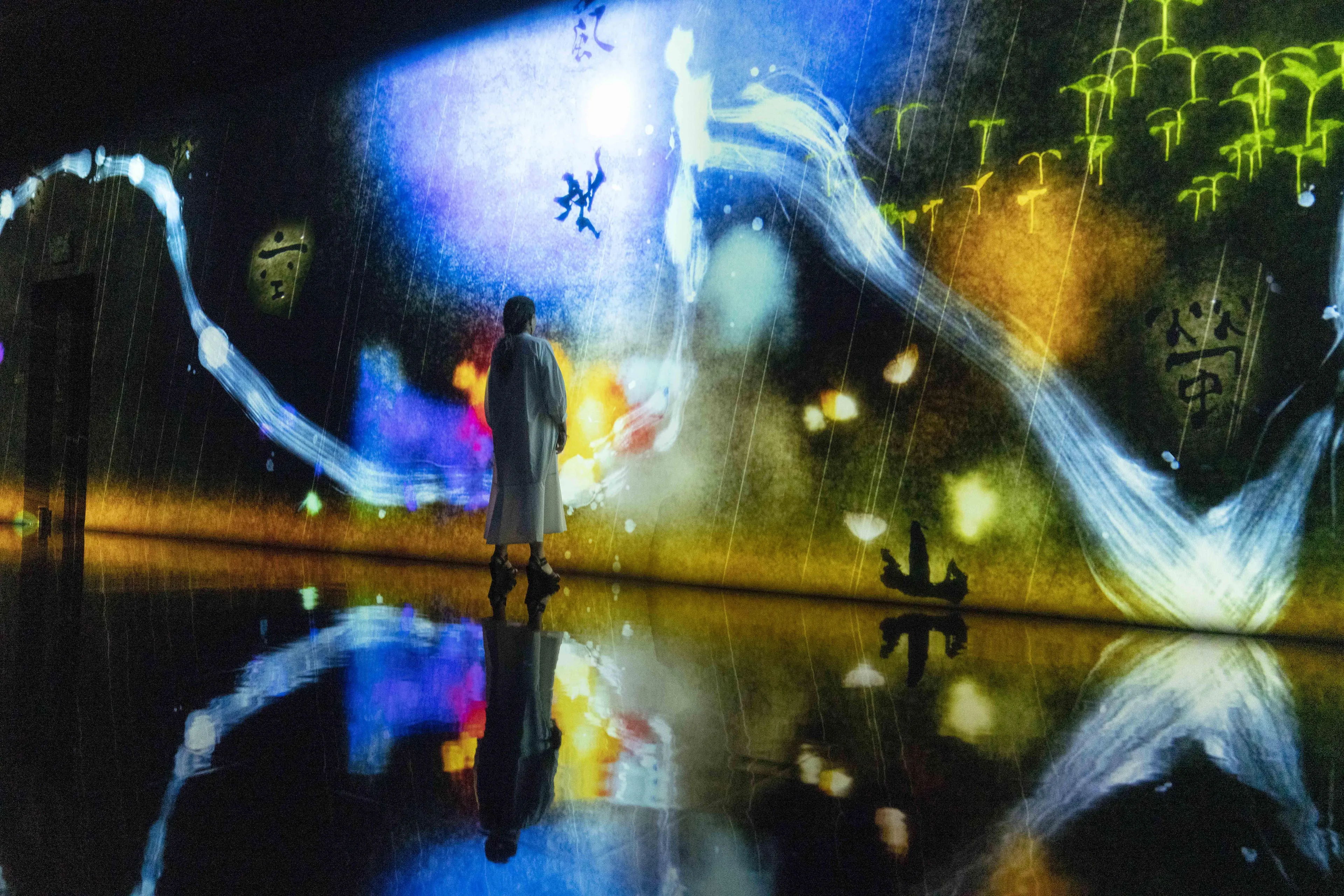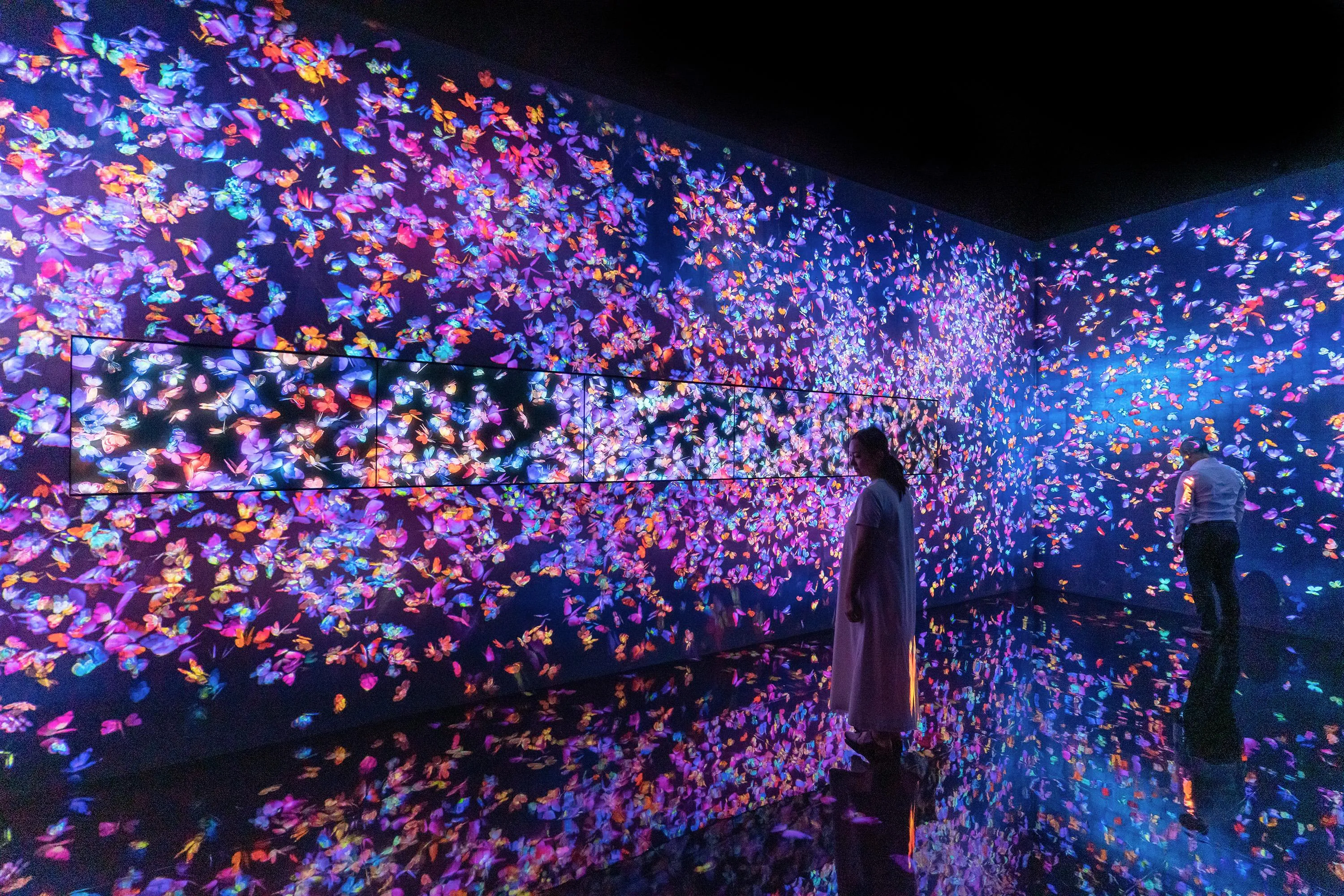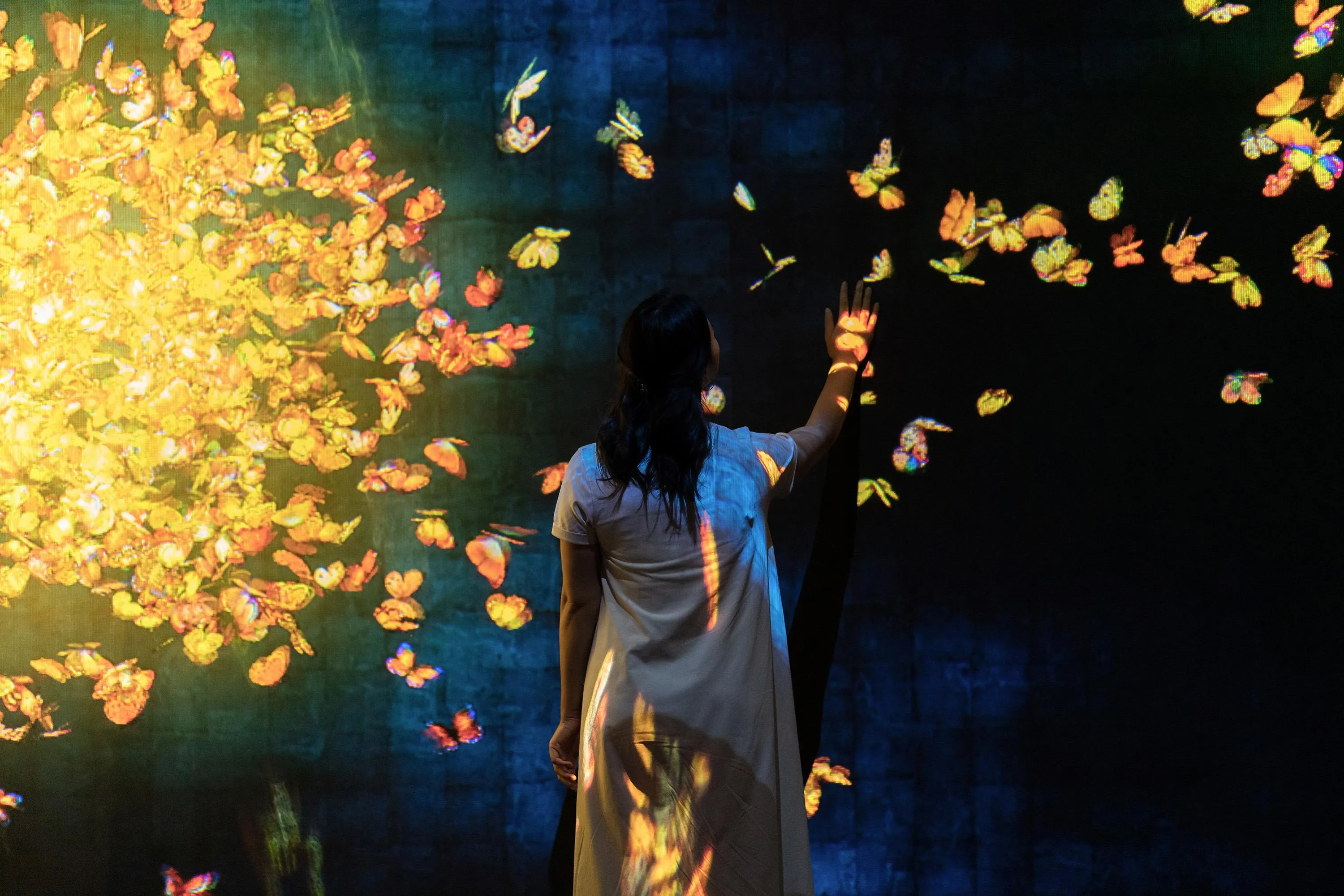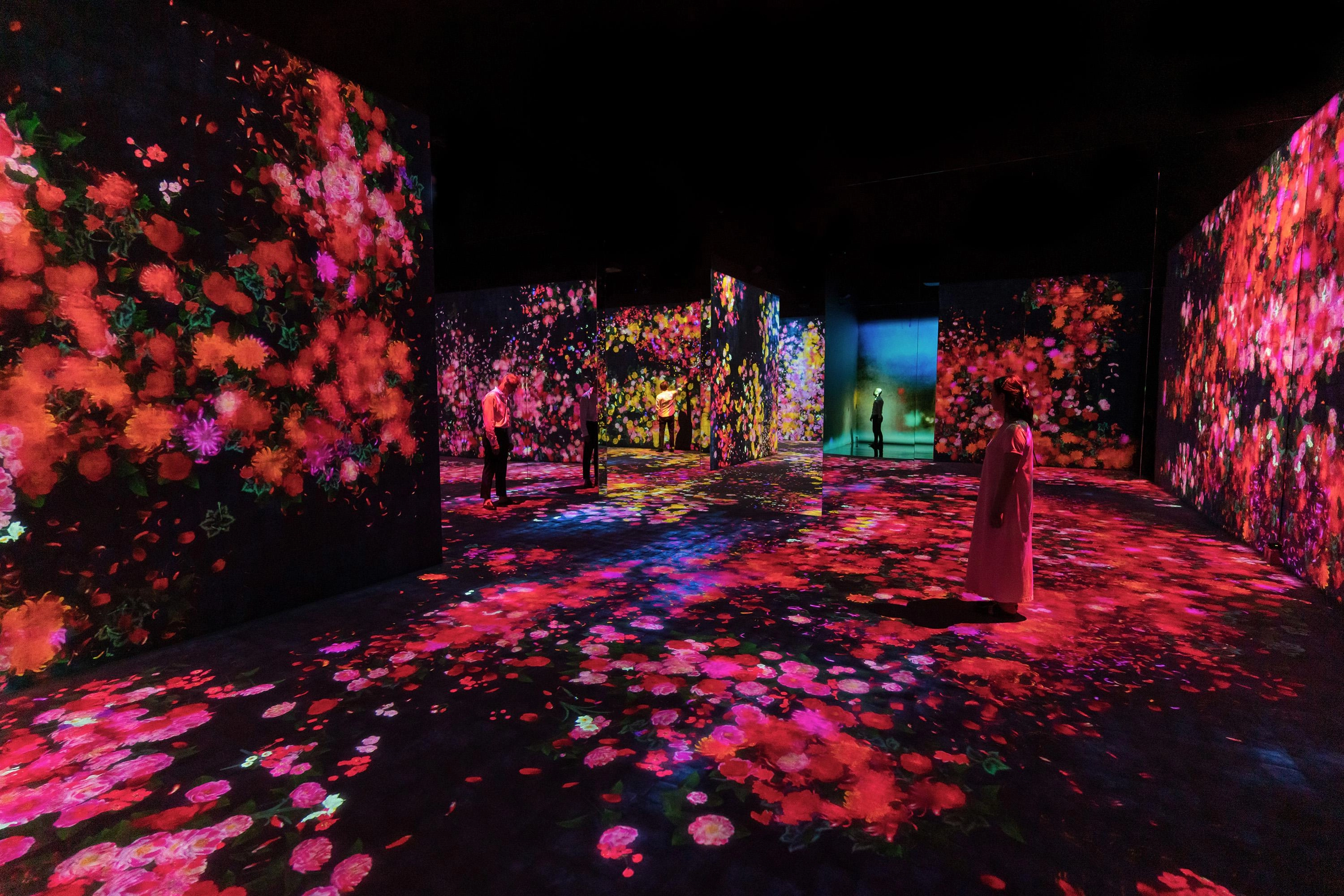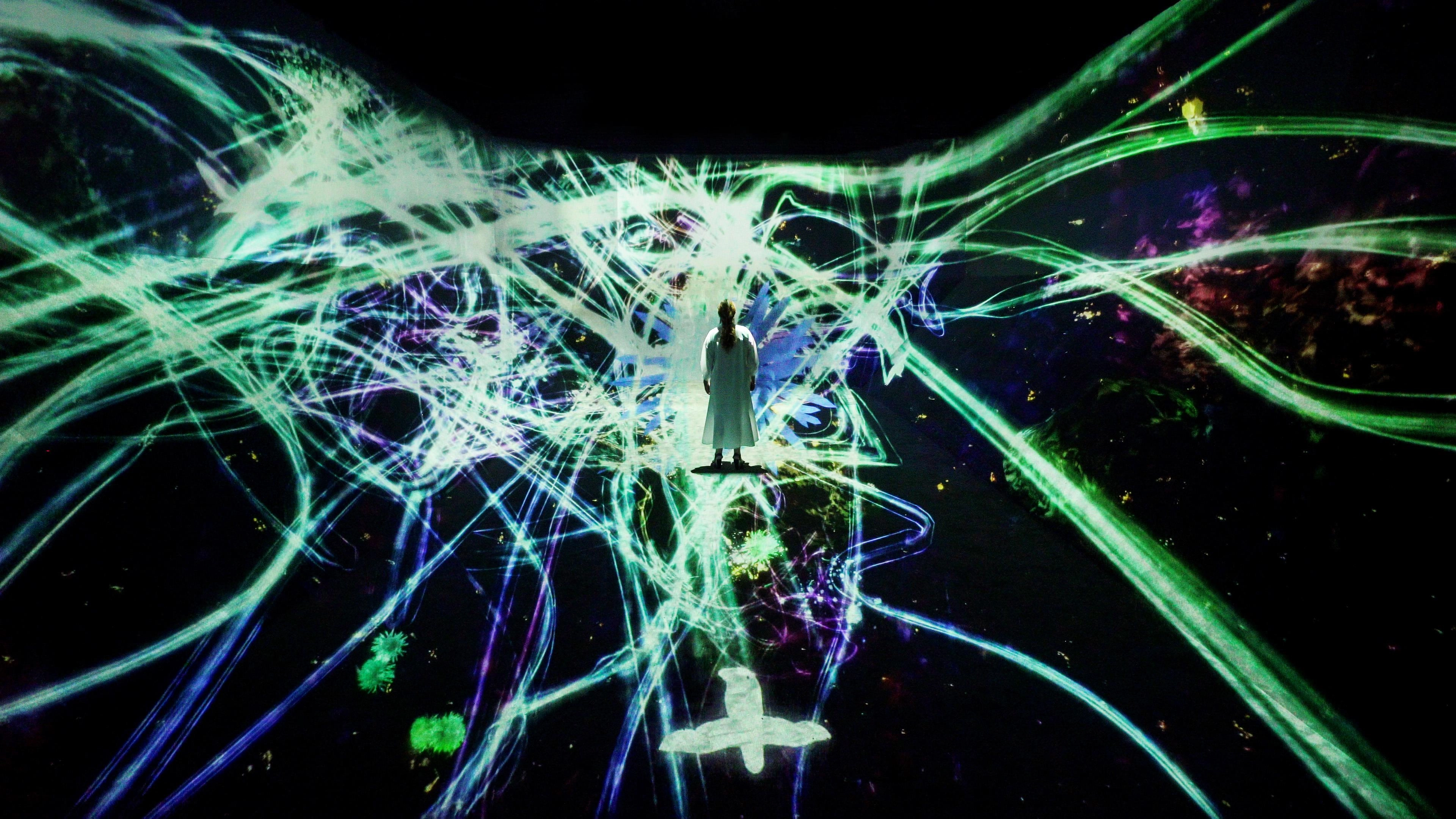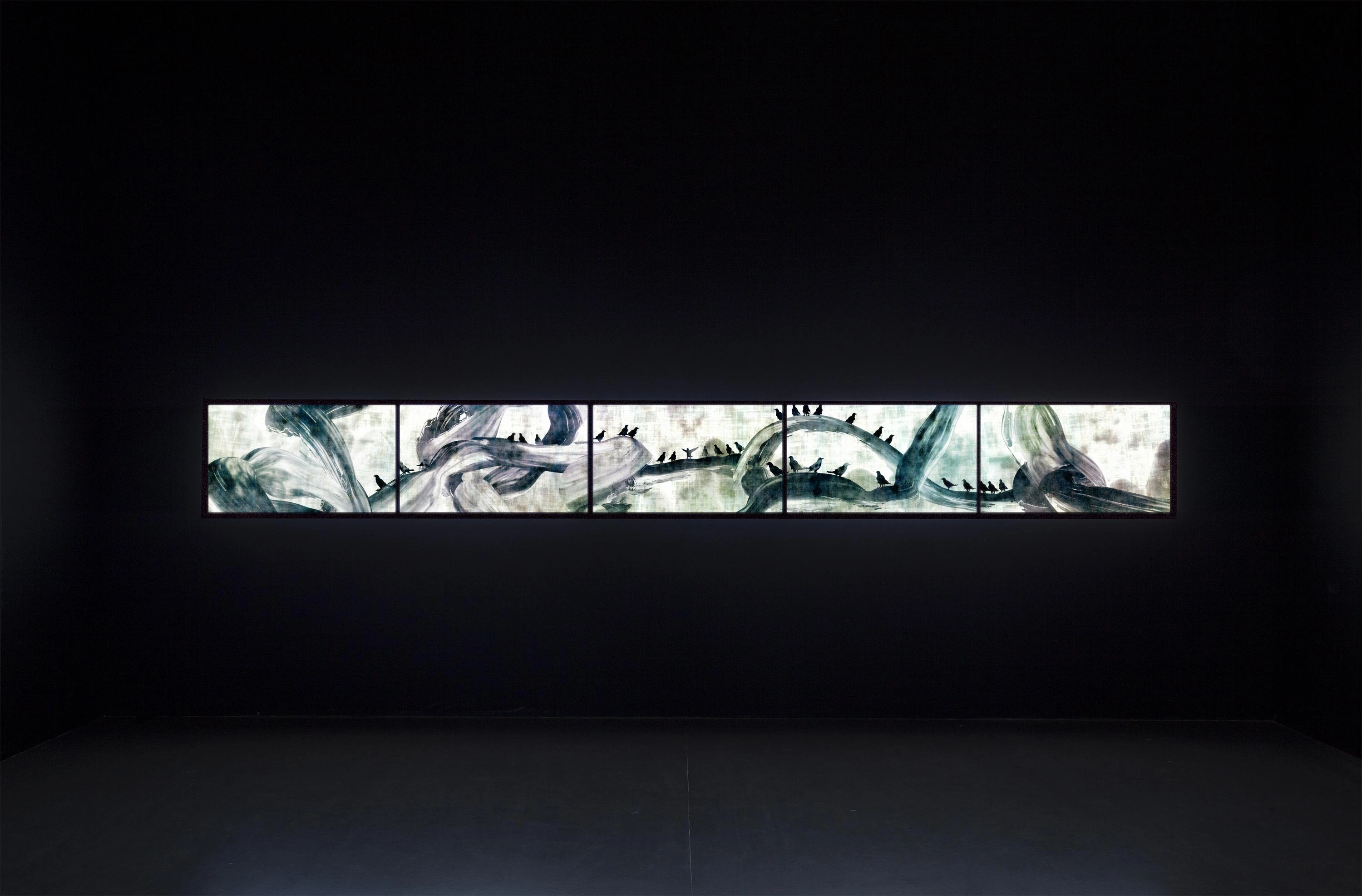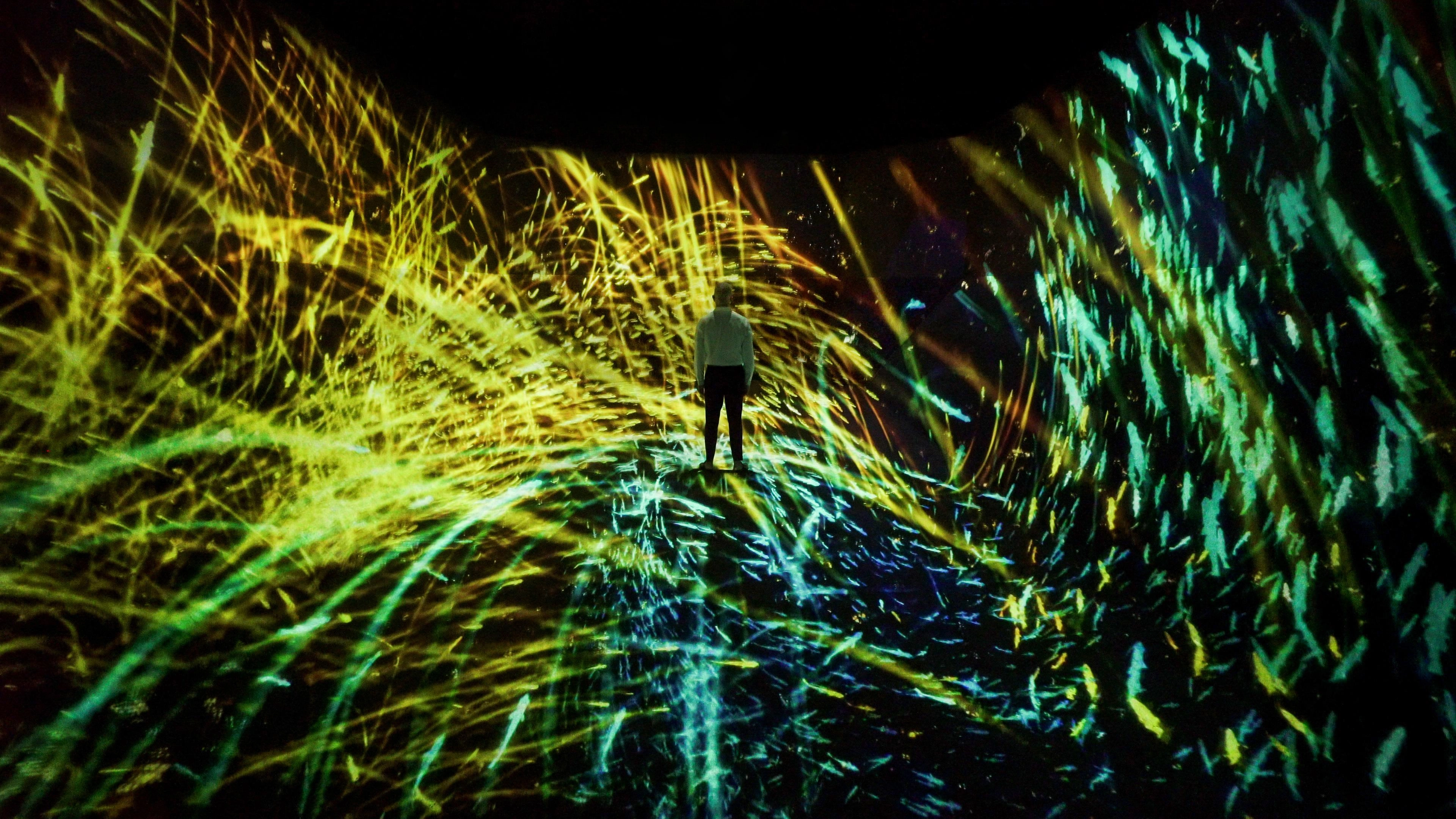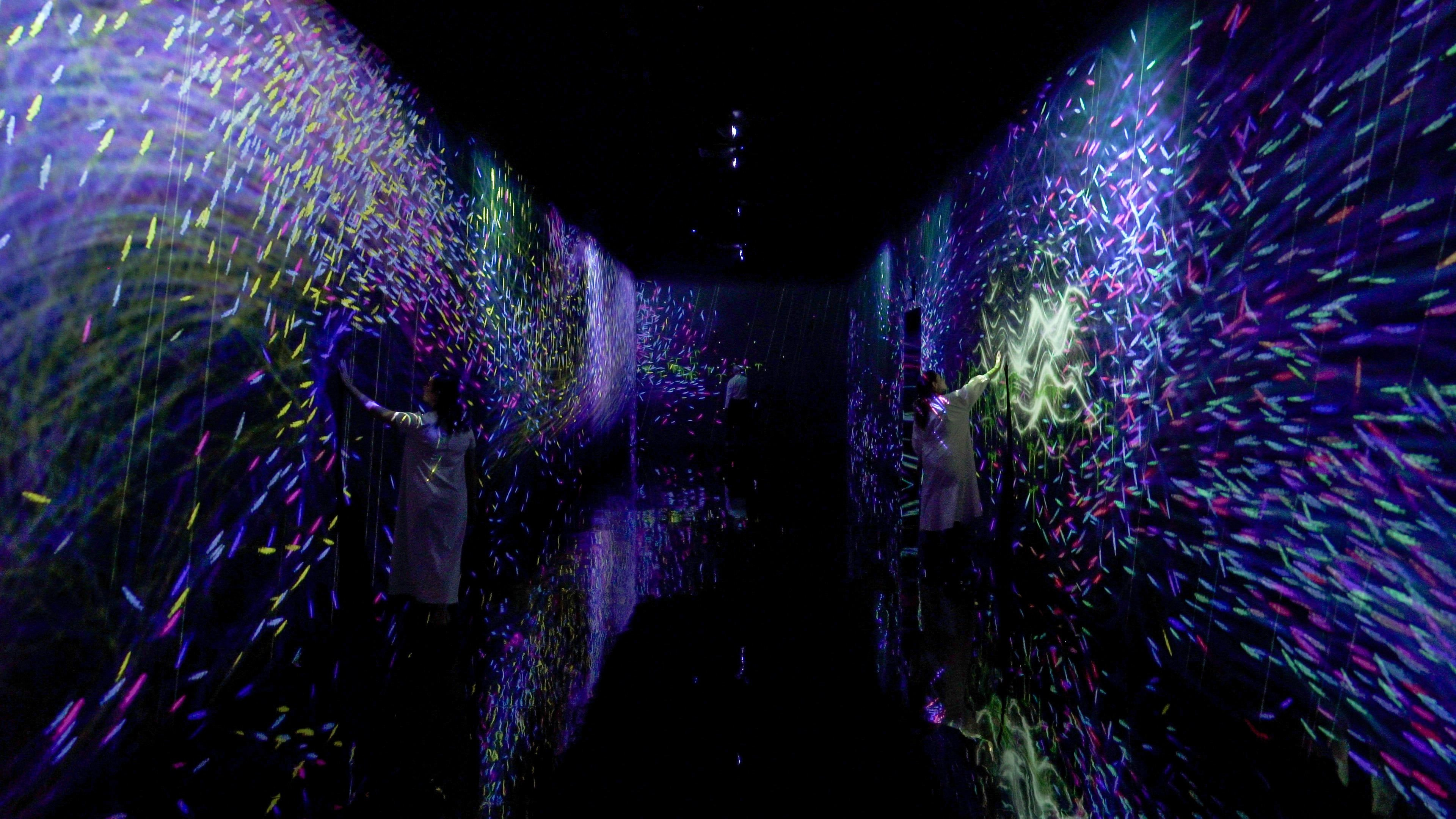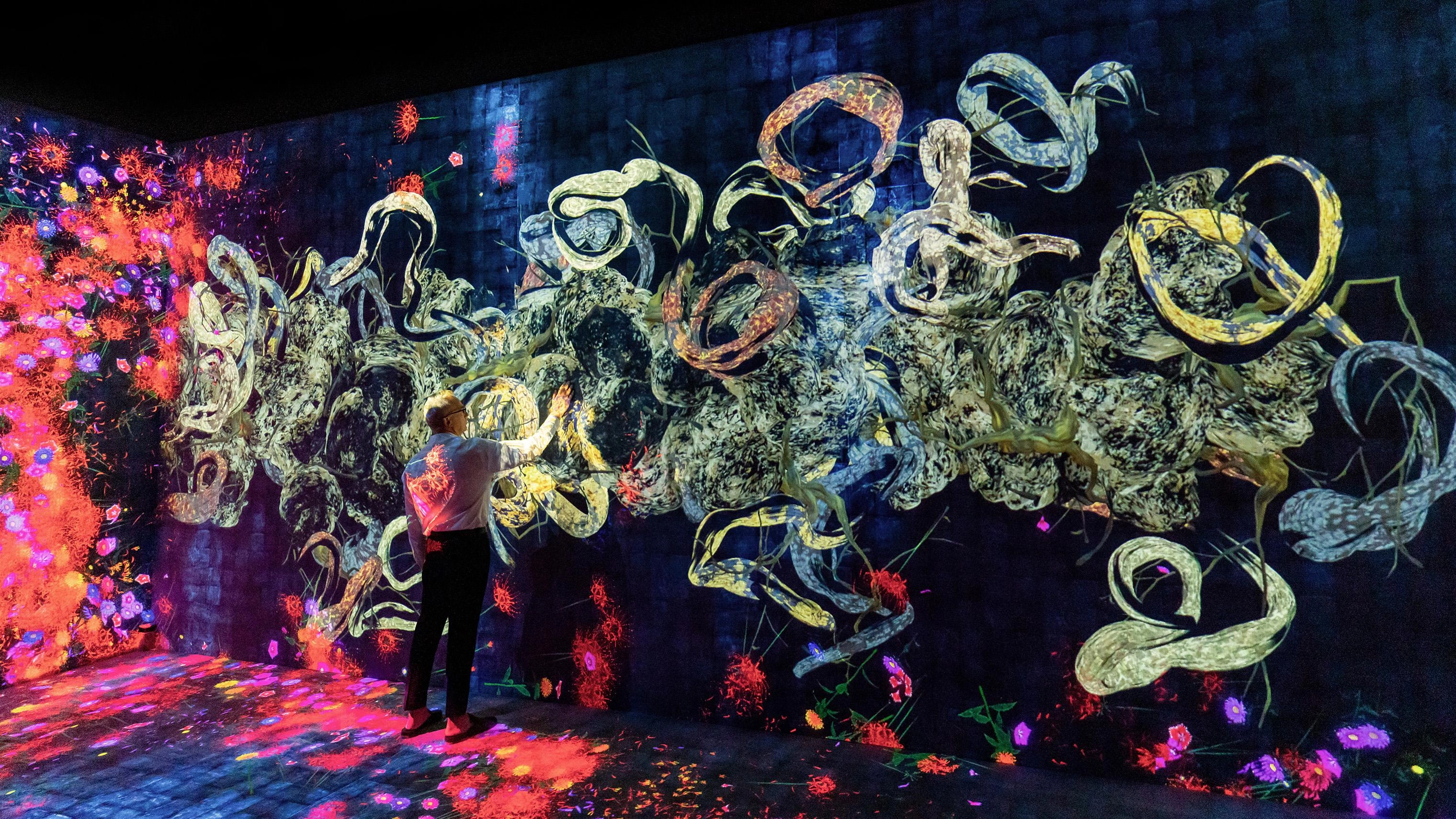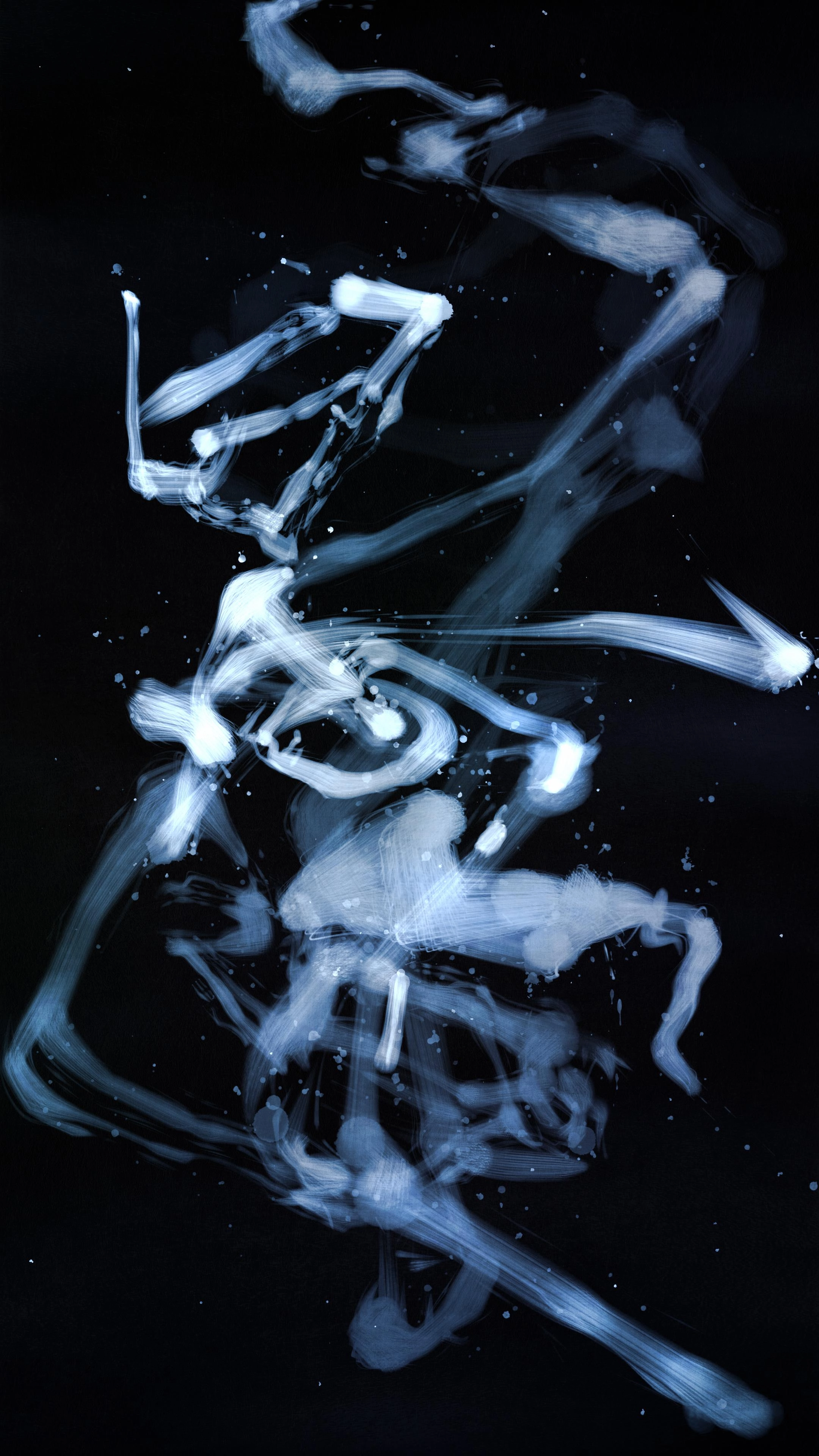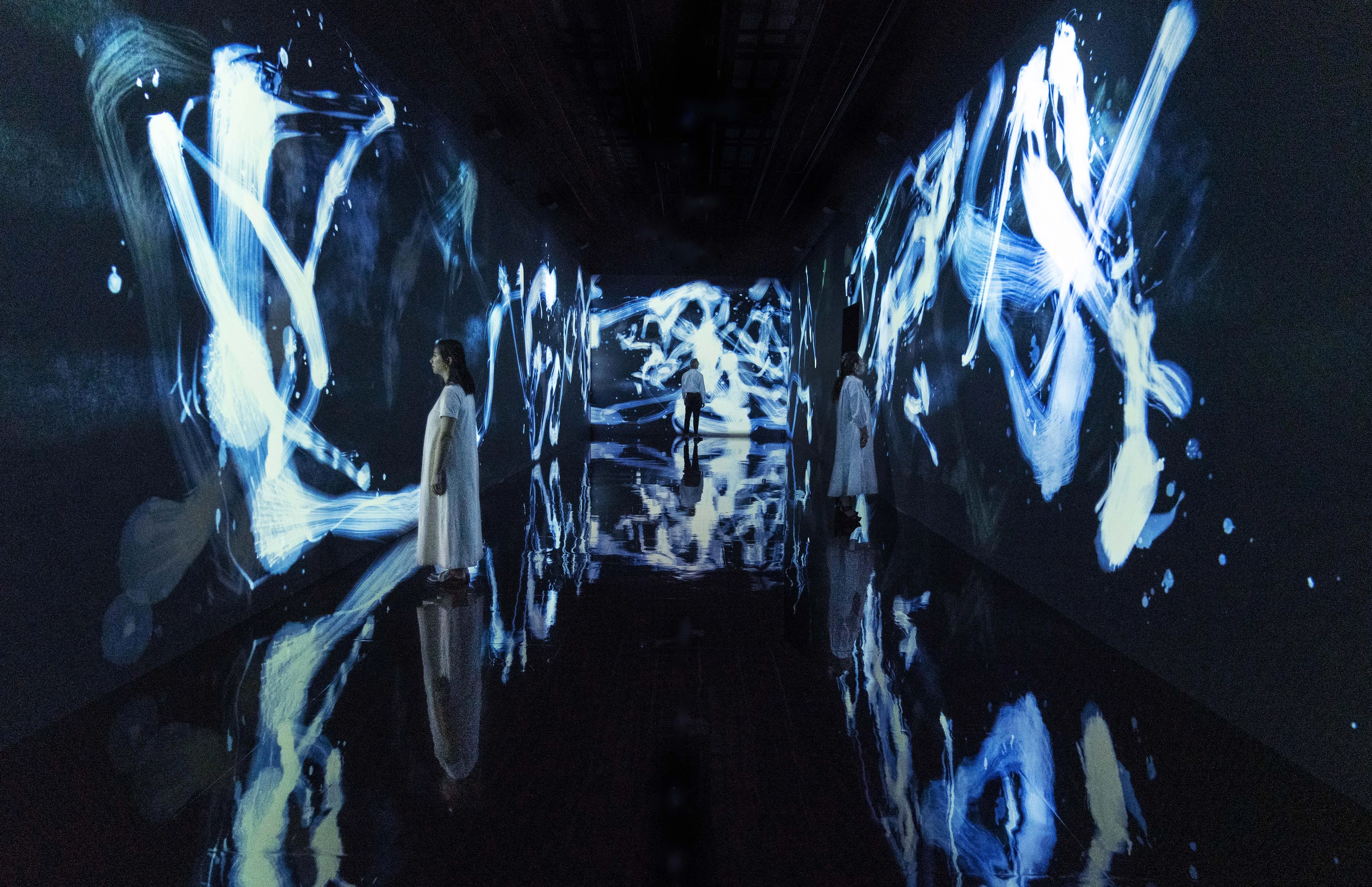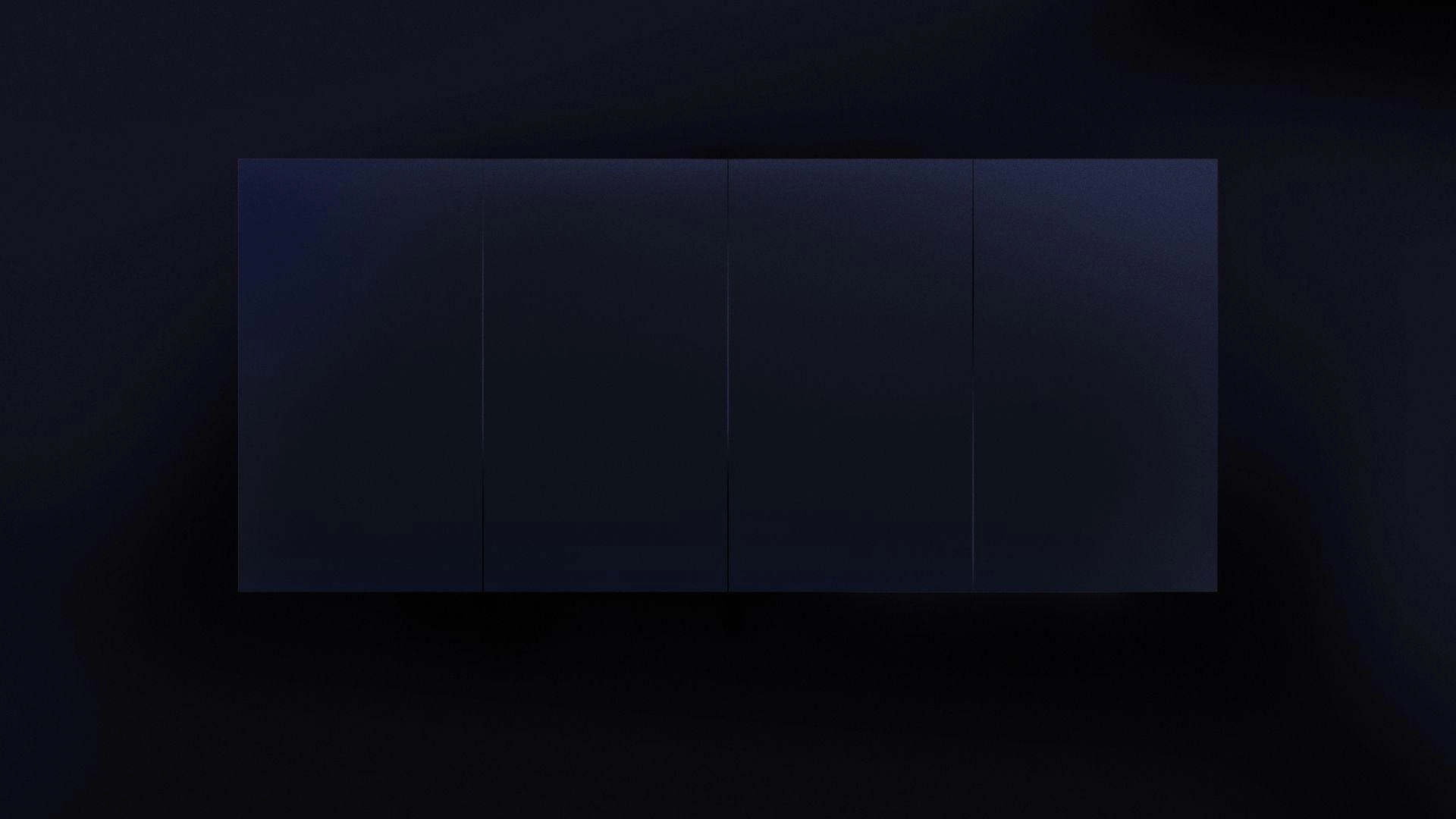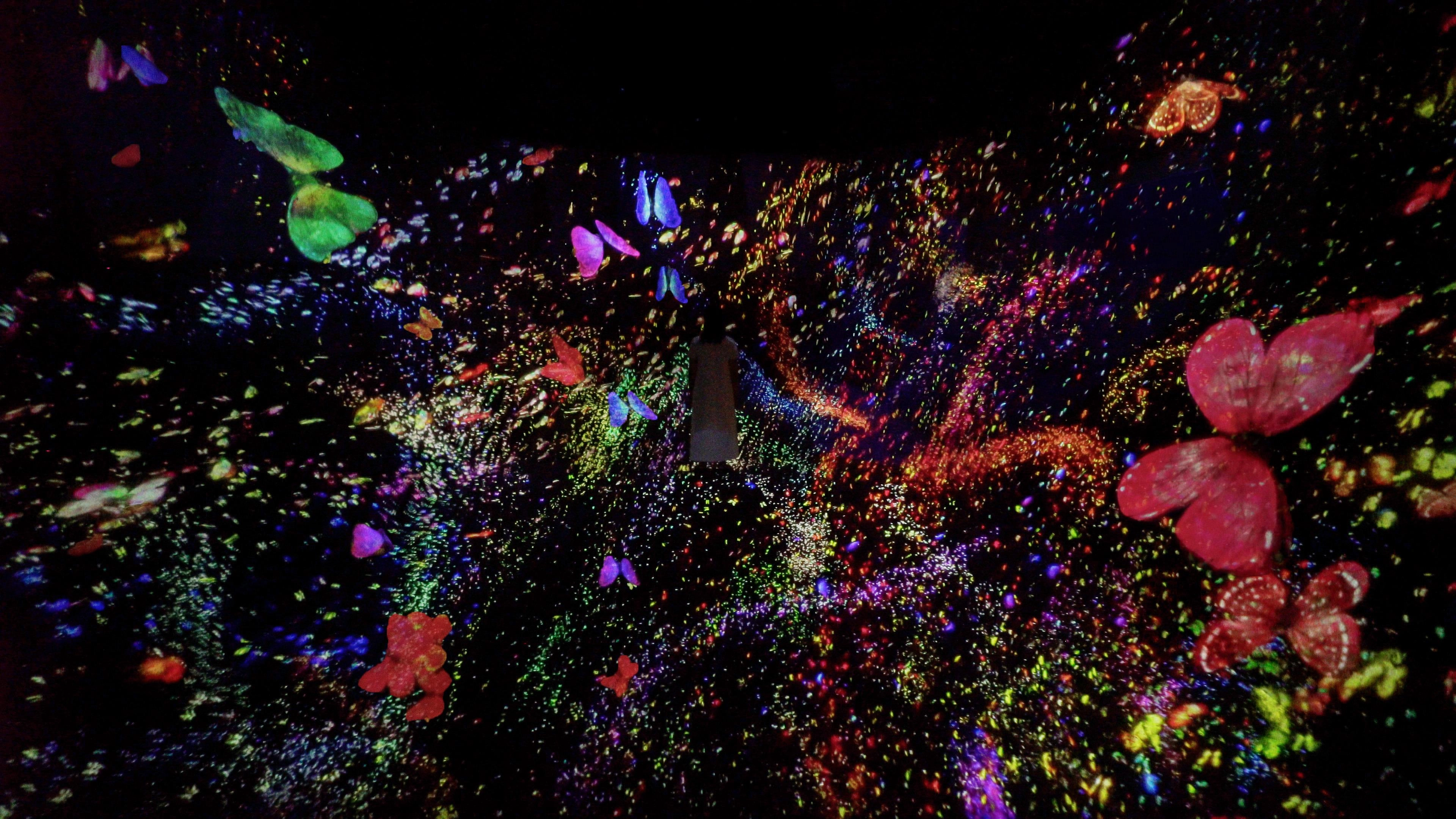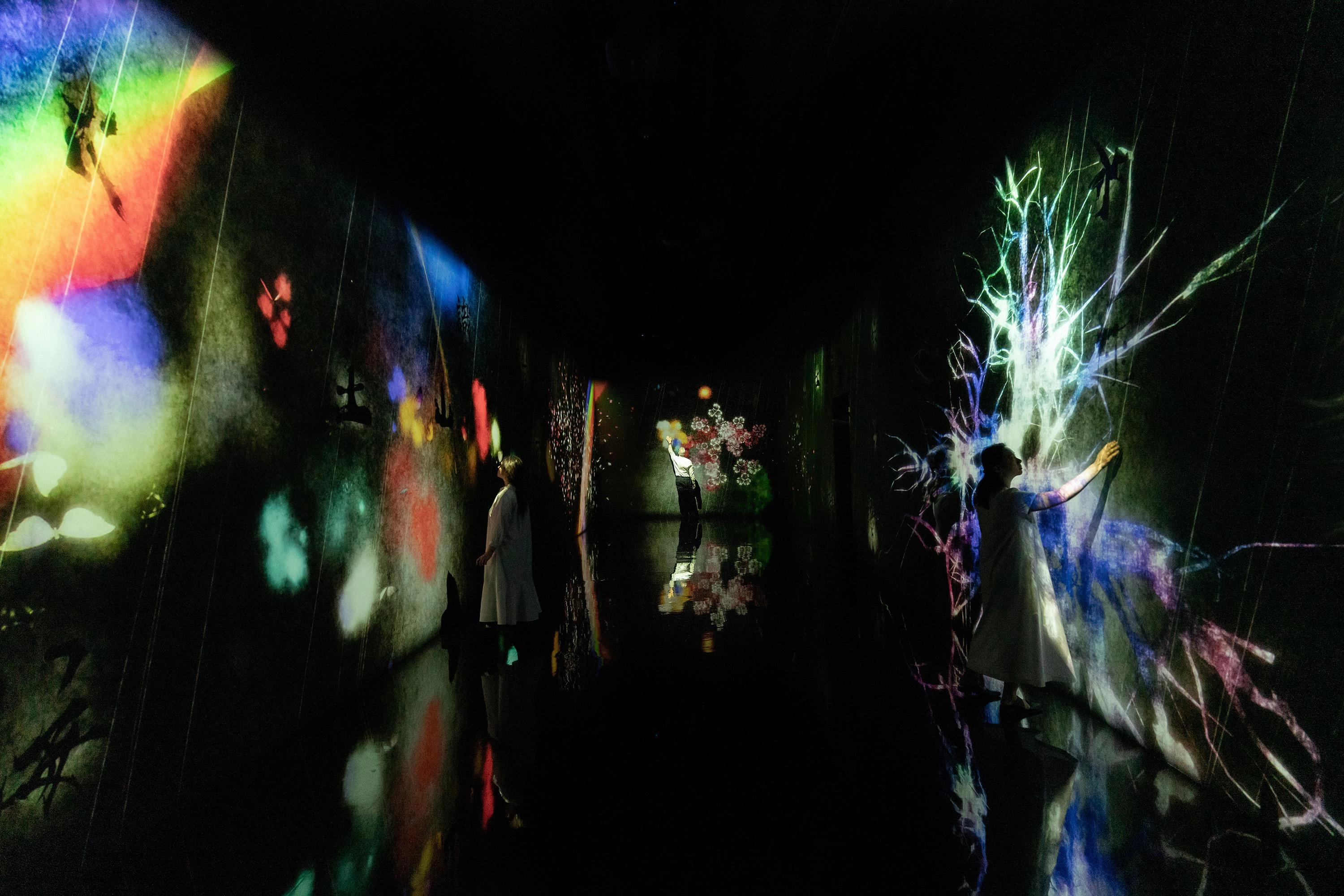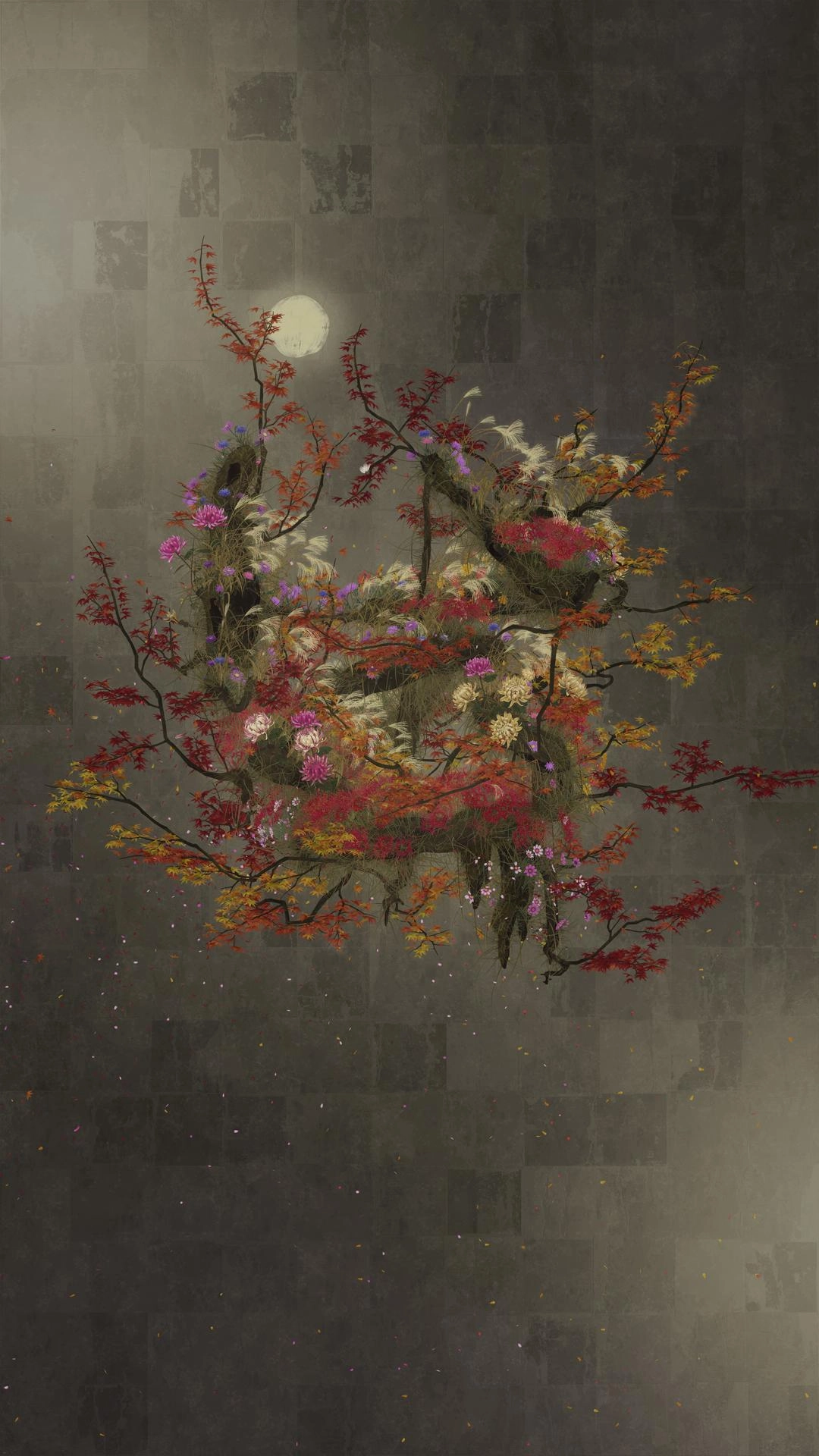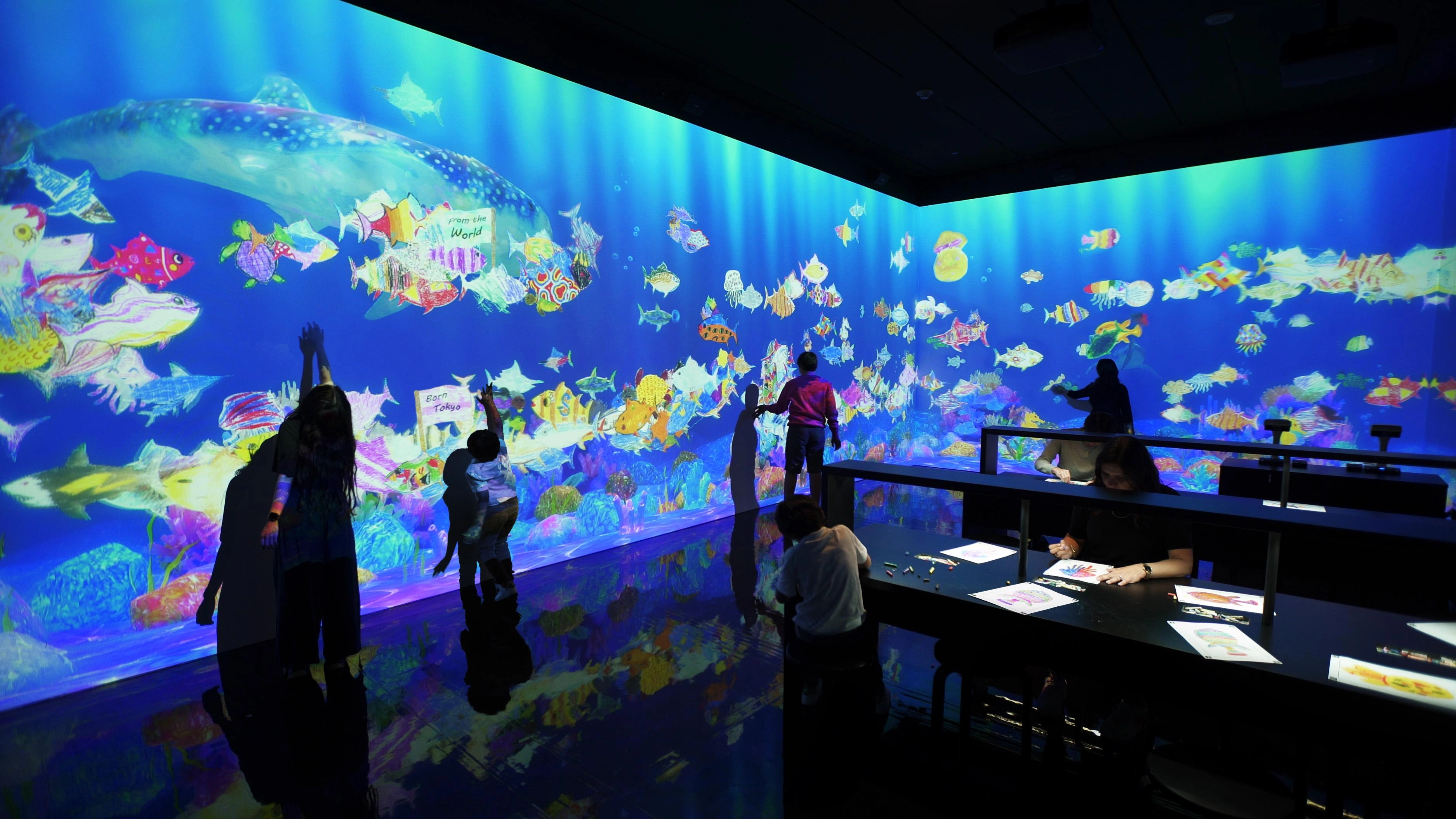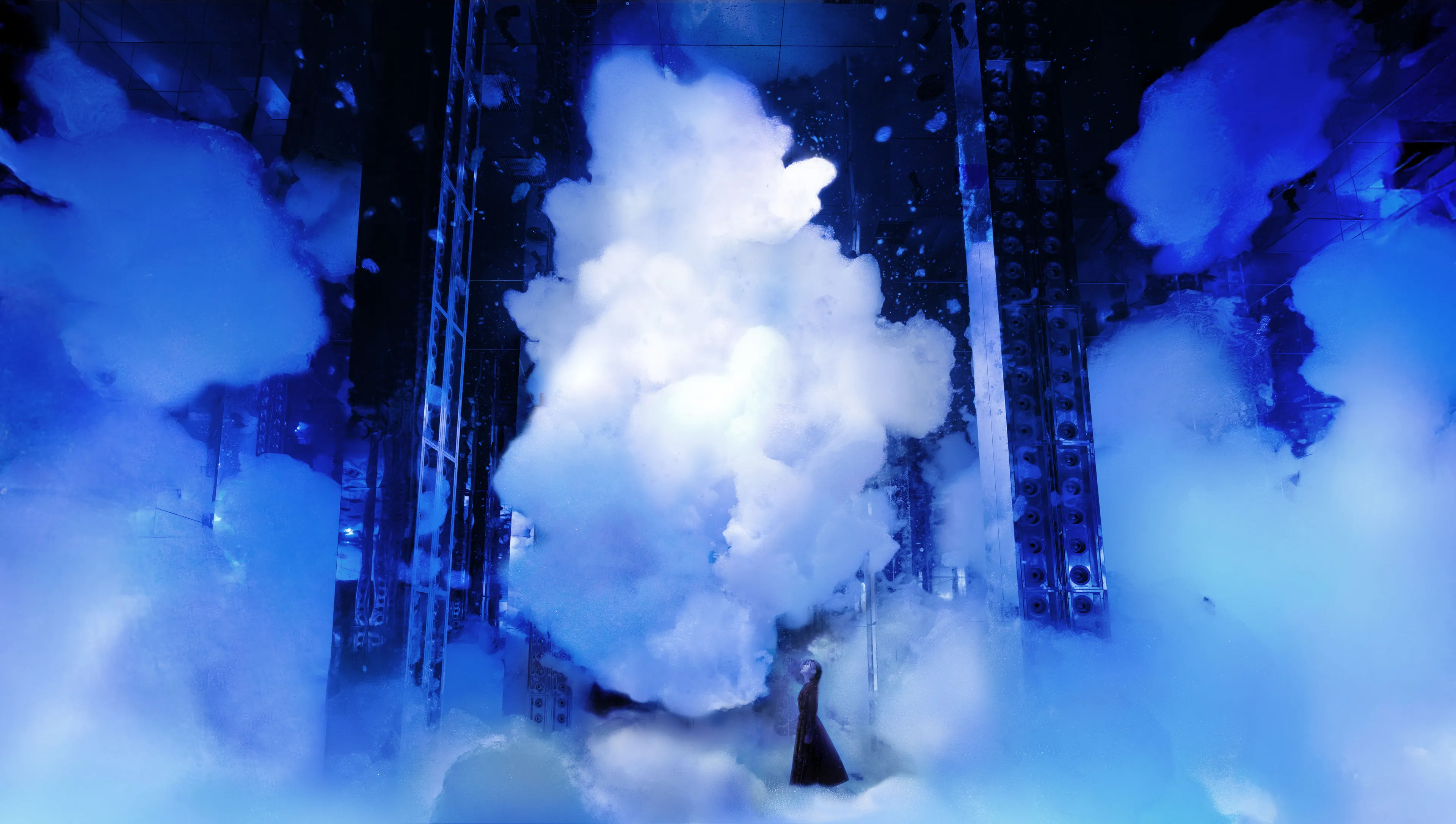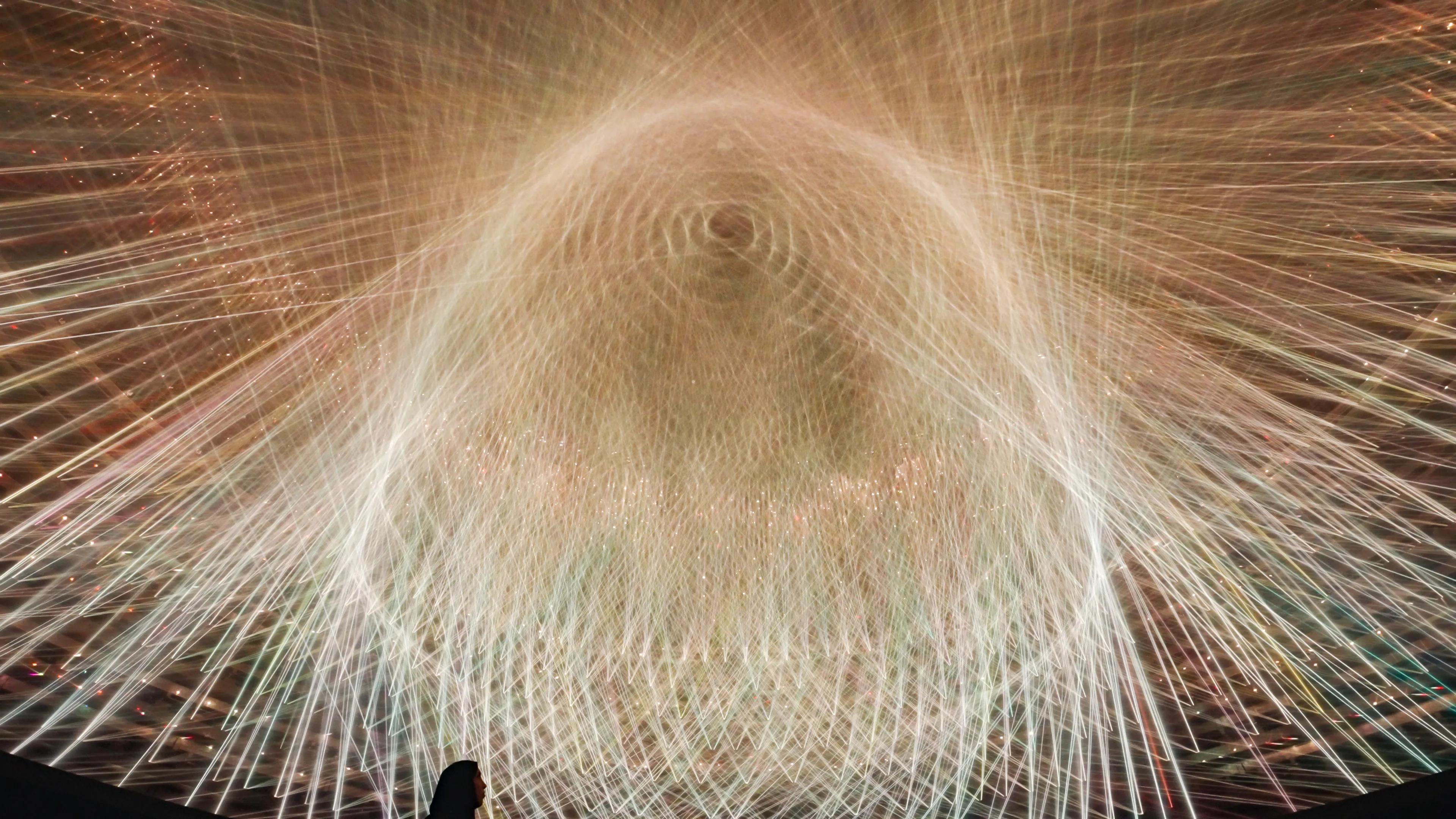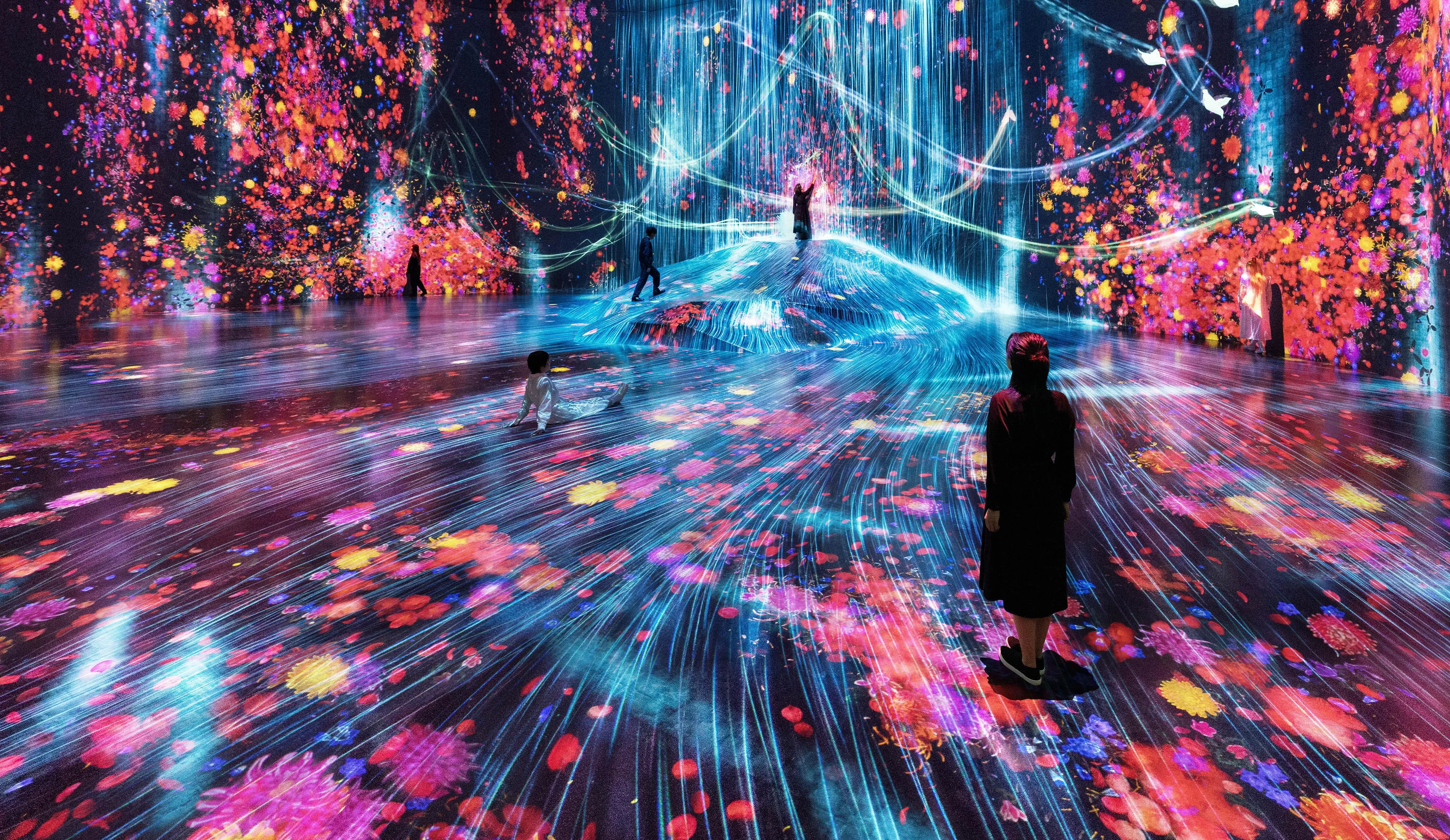"teamLab: Continuity" is a different approach to an art exhibition experience based on teamLab’s core concepts that the digital domain can expand art, and that within the digital domain, art can transcend both physical and conceptual boundaries. Instead of offering a selection of objects plucked from the world around us, presented in clusters or in sequence, it offers a world of dynamic artworks without distinct boundaries, and without a map. The interactive digital installations are neither a prerecorded animation nor on a loop—the work is rendered in real time. The interaction between the viewer and the installation causes continuous change in the artwork; previous visual states can never be replicated and will never reoccur. Artworks fly beyond borders, expand, influence, and sometimes intermingle with each other.
Exhibitions have played many roles over past centuries, often looking at objects as ways of understanding the world around us. Royal collections assembled things of splendor and fascination. World’s fairs and expositions were organized to showcase modern technologies alongside art and culture. These modes of display incorporate power dynamics, as do the practices of today’s museums. The exclusivity of the curated subjects or objects, the rarefied nature of the experience, and the politics of who collects what and when are all still present in the exhibitions we attend today.
Contemporary museums often require visitors to balance their interest in attending the special event that is the temporary art exhibition, a fundamentally social event shared by both friends and strangers, with the desire to contemplate and examine art as a personal, if not solitary, experience. In "teamLab: Continuity", immersive works of art react to each other and to the people in the space, making the presence of others a fundamental and positive part of the experience. Explore with intention, discover, and create a new world with others.
A Collective Future: Exhibitions in the Age of Digital Interactivity
Living in challenging times, when we are confronted daily with the global threat of the climate crisis, the playfulness and wonder of teamLab’s artworks might seem escapist, self-indulgent, or naïve. After spending time in the exhibition, however, it is hard to deny its connection to the real world. Natural life cycles play out and start anew, historical modes of representation are explored and redeployed, and our interdependence with the environment is front and center. The interconnected artworks, governed by dynamic algorithms, are never exactly the same twice, although the various experiences, imagery, and tempos are underpinned by a type of measured continuity. Seamless transitions between experiences, and the interactive quality of the artworks, are based not just on the actions but the presence of the visitors. Thinking back to Imperial collections, world’s fairs, and other pre-digital exhibitions, what is different about this one, realized in the age of digital interactivity and unprecedented connectivity? Is the principle impulse still to better understand the world we live in? Or is it designed to detach the viewer from the real world by offering a creative alternative?
teamLab’s artworks—interpretations of blooming flowers, of strokes of ink, of soaring birds, or of schools of fish—can almost feel like windows into adjacent realms, but they can also serve as mirrors that reflect the world we live in. Each work can be explored in an unstructured way with the option to return, revisit, and re-explore. Rather than passively consuming works of art, viewers are automatically actively involved in sympoiesis—“together-making”—or collective production. Not just an assembly of marvelous things to behold, "teamLab: Continuity" offers a place to reflect on the shared creation of the world we live in—a collective privilege and responsibility as crucial to recognize in spaces dedicated to art and culture as it is in natural ecosystems.
- Karin Oen, Curator, Asian Art Museum of San Francisco
